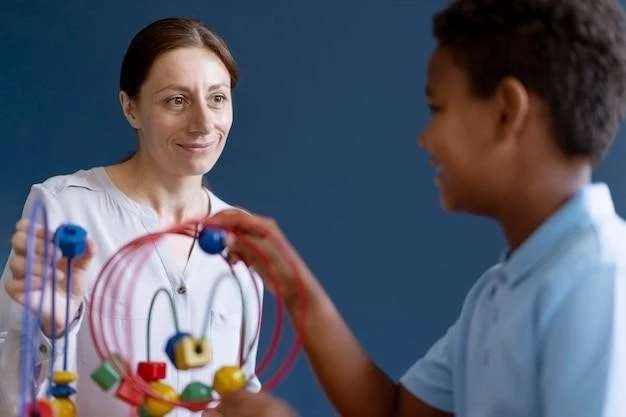Disease ⸺ Frontometaphyseal Dysplasia
Frontometaphyseal dysplasia is a rare genetic disorder characterized by skeletal abnormalities and distinct facial features. The disease is caused by mutations in a specific gene. This article will provide an overview of the condition, its genetic basis, diagnosis, treatment options, importance of orthopedic surgery and physical therapy, and long-term outlook for individuals affected by Frontometaphyseal dysplasia.
Overview of Frontometaphyseal Dysplasia
Frontometaphyseal dysplasia is a rare genetic disorder that manifests with skeletal abnormalities and unique facial features. Individuals with this condition may experience bone deformities, growth retardation, and distinctive craniofacial characteristics such as a prominent forehead and wide-set eyes.
Patients with Frontometaphyseal dysplasia often present with short stature, joint stiffness, and limb deformities. The disorder can affect the growth and development of bones, leading to physical limitations and skeletal malformations.
It is essential for individuals with Frontometaphyseal dysplasia to receive early diagnosis and appropriate medical management to address the skeletal abnormalities and associated symptoms. Genetic counseling is crucial for families affected by this condition to understand the inheritance pattern and recurrence risks.
As Frontometaphyseal dysplasia is a lifelong condition, regular monitoring by healthcare providers specializing in orthopedics and genetics is necessary to manage the progression of the disease and optimize the individual’s quality of life. Stay informed about the latest research and advancements in the field to ensure the best possible care for individuals with Frontometaphyseal dysplasia.
Genetic Basis of Frontometaphyseal Dysplasia
Frontometaphyseal dysplasia is primarily caused by mutations in the X-linked gene called FLNA (filamin A). These genetic alterations disrupt normal bone development and lead to the characteristic skeletal abnormalities and facial features observed in individuals with the condition.
FLNA encodes a protein essential for the formation and maintenance of the skeletal structure. Mutations in this gene can result in abnormal bone growth, joint deformities, and growth retardation seen in Frontometaphyseal dysplasia. The inheritance pattern of this disorder follows an X-linked dominant manner.
Genetic testing can help confirm the diagnosis of Frontometaphyseal dysplasia by identifying mutations in the FLNA gene. Understanding the genetic basis of the condition is crucial for providing personalized medical care and genetic counseling to affected individuals and their families.
Researchers continue to investigate the specific mechanisms by which FLNA mutations contribute to the development of Frontometaphyseal dysplasia. By unraveling the genetic pathways involved in this disorder, advancements in targeted treatments and management strategies may offer hope for improved outcomes and quality of life for individuals affected by Frontometaphyseal dysplasia.
Diagnosis of Frontometaphyseal Dysplasia
Diagnosing Frontometaphyseal dysplasia involves a comprehensive assessment of the individual’s skeletal abnormalities, facial features, and growth patterns. Physical examination and imaging studies such as X-rays can reveal characteristic bone deformities and growth retardation associated with the condition.
Genetic testing plays a vital role in confirming the diagnosis by identifying mutations in the FLNA gene, which is responsible for Frontometaphyseal dysplasia. Additionally, medical history review and evaluation of family members for similar symptoms are important for a complete diagnostic assessment.
Consulting with healthcare professionals specializing in genetics, orthopedics, and medical imaging is essential for an accurate and timely diagnosis of Frontometaphyseal dysplasia. Early detection of the condition allows for the initiation of appropriate treatment and management strategies to address the skeletal abnormalities and associated symptoms effectively.
Being proactive in seeking medical evaluation and genetic testing can provide valuable insights into the underlying cause of skeletal and facial features characteristic of Frontometaphyseal dysplasia. Stay informed about available diagnostic methods and collaborate closely with healthcare providers to ensure a comprehensive and personalized approach to managing the condition.
Treatment Options for Frontometaphyseal Dysplasia
Managing Frontometaphyseal dysplasia involves a multidisciplinary approach to address the skeletal abnormalities and associated symptoms. Treatment options may include orthopedic interventions, physical therapy, and genetic counseling to optimize care for individuals with the condition.
Orthopedic surgery may be recommended to correct bone deformities, improve joint function, and enhance mobility. Surgical procedures tailored to the individual’s specific needs can help address limb abnormalities and alleviate physical limitations associated with Frontometaphyseal dysplasia.
Physical therapy plays a crucial role in managing the condition by focusing on improving muscle strength, joint flexibility, and overall physical well-being. Customized therapy programs designed by a skilled physical therapist can enhance the individual’s functional abilities and quality of life.
Genetic counseling is essential for individuals with Frontometaphyseal dysplasia and their families to understand the inheritance pattern, genetic risks, and available reproductive options. Counseling services provide valuable information and support to navigate the complexities of the condition.
Exploring all available treatment options and collaborating with a specialized healthcare team can help tailor a comprehensive care plan for Frontometaphyseal dysplasia. Stay engaged in ongoing medical management, therapy sessions, and genetic counseling to optimize outcomes and enhance the overall well-being of individuals affected by this rare genetic disorder.
Orthopedic Surgery for Frontometaphyseal Dysplasia
Orthopedic surgery plays a significant role in the management of Frontometaphyseal dysplasia by addressing skeletal abnormalities and bone deformities that affect individuals with the condition. Surgical interventions are tailored to the specific needs of the patient to improve function and quality of life.
Orthopedic procedures may focus on correcting limb deformities, such as bowing of the legs or arms, to enhance mobility and physical alignment. Surgeons specialize in treating bone malformations associated with Frontometaphyseal dysplasia, utilizing advanced techniques to achieve optimal outcomes.
Surgical interventions may also involve procedures to address joint stiffness, angular deformities, or spinal abnormalities that can impact an individual’s daily activities and overall well-being. Through precise surgical planning and personalized care, orthopedic surgery aims to alleviate pain and enhance functional abilities.
Rehabilitation following orthopedic surgery is crucial for ensuring a successful recovery and maximizing the benefits of the procedure. Physical therapy and post-operative care play a vital role in helping individuals regain strength, flexibility, and mobility after undergoing orthopedic interventions for Frontometaphyseal dysplasia.
Consulting with an experienced orthopedic surgeon specializing in rare genetic disorders like Frontometaphyseal dysplasia is key to developing a comprehensive treatment plan that addresses the unique orthopedic needs of the individual. Stay informed about the benefits and potential risks of orthopedic surgery to make well-informed decisions regarding treatment options.
Importance of Physical Therapy in Managing Frontometaphyseal Dysplasia
Physical therapy plays a crucial role in managing Frontometaphyseal dysplasia by focusing on improving mobility, strength, and overall physical function. Tailored therapy programs designed by skilled therapists can help individuals with the condition enhance their quality of life and daily activities;
Physical therapy aims to address specific challenges associated with Frontometaphyseal dysplasia, such as joint stiffness, muscle weakness, and coordination difficulties. Therapists work closely with patients to develop personalized exercise routines and rehabilitation strategies to target individual needs and goals.
Through a combination of exercises, stretches, and manual therapy techniques, physical therapists can help individuals with Frontometaphyseal dysplasia improve their range of motion, reduce pain, and enhance muscle function. Regular therapy sessions play a key role in promoting physical well-being and independence.

Additionally, physical therapists provide education on proper body mechanics, adaptive equipment, and strategies to manage daily activities more effectively. By empowering individuals with Frontometaphyseal dysplasia with essential skills and knowledge, physical therapy contributes to long-term functional improvements and overall health.
Collaborating with a dedicated physical therapy team experienced in treating rare genetic disorders like Frontometaphyseal dysplasia is essential for maximizing the benefits of therapy. Stay committed to your therapy plan, stay consistent with exercises, and communicate openly with your therapist to achieve the best possible outcomes in managing Frontometaphyseal dysplasia.
Long-Term Outlook for Individuals with Frontometaphyseal Dysplasia
Individuals with Frontometaphyseal dysplasia may face ongoing challenges related to skeletal abnormalities, growth retardation, and physical limitations throughout their lives. However, with early diagnosis, appropriate medical interventions, and ongoing care, it is possible to manage the condition effectively and improve quality of life.
Regular monitoring by healthcare providers specializing in genetics and orthopedics is essential to assess disease progression, address emerging issues, and adjust treatment plans accordingly. Collaboration with a multidisciplinary healthcare team can help individuals with Frontometaphyseal dysplasia navigate potential complications and optimize their long-term well-being.
Orthopedic surgeries, physical therapy, and genetic counseling play crucial roles in managing the symptoms and functional challenges associated with Frontometaphyseal dysplasia. By staying proactive in seeking medical care, participating in therapy sessions, and staying informed about the latest advancements, individuals can achieve better outcomes and enhance their overall quality of life.
It is important for individuals with Frontometaphyseal dysplasia to maintain open communication with their healthcare providers, actively participate in their treatment plans, and prioritize self-care practices to support their physical and emotional well-being. By embracing a proactive and multidisciplinary approach to management, individuals can navigate the complexities of Frontometaphyseal dysplasia with resilience and optimism.
